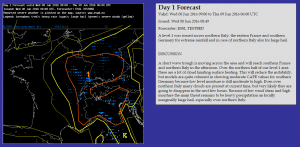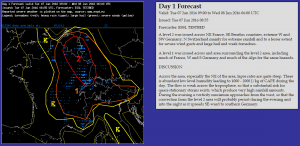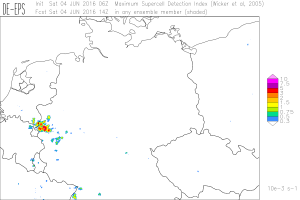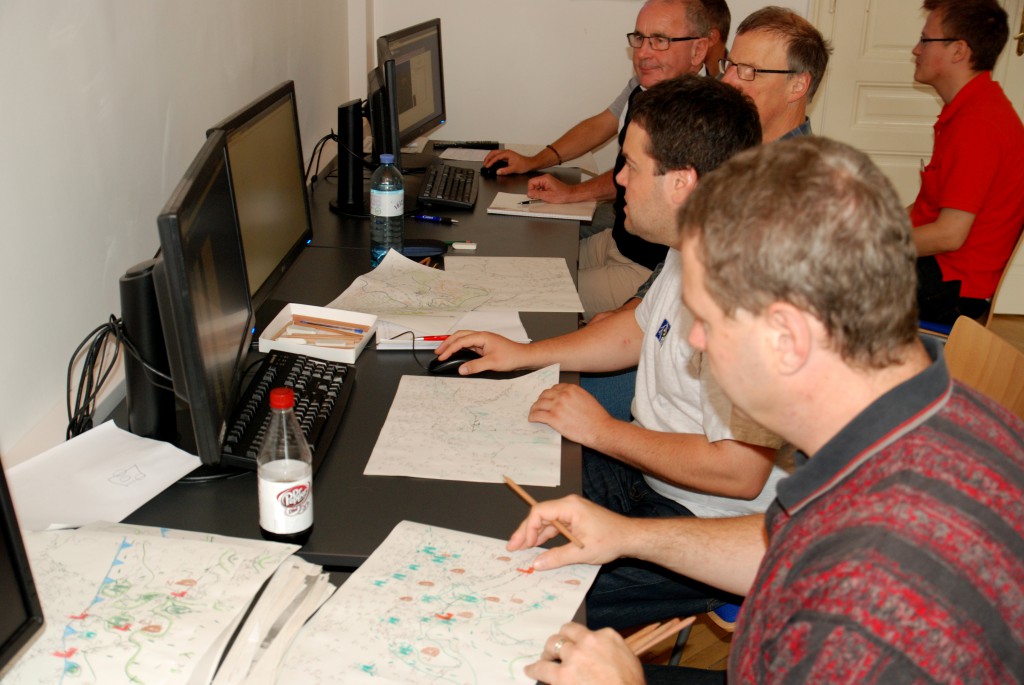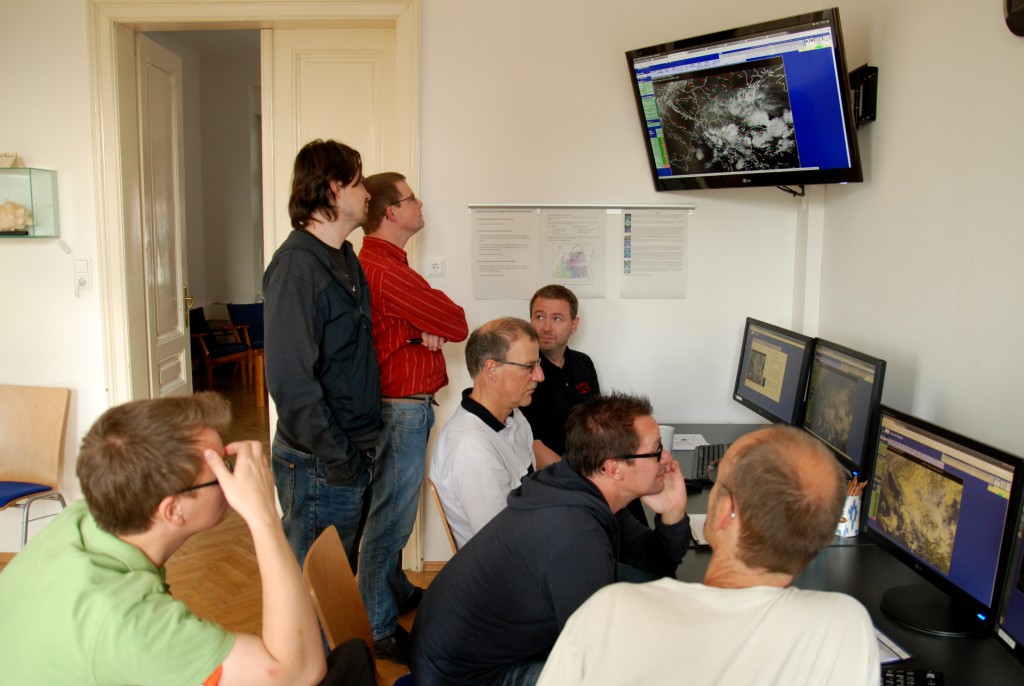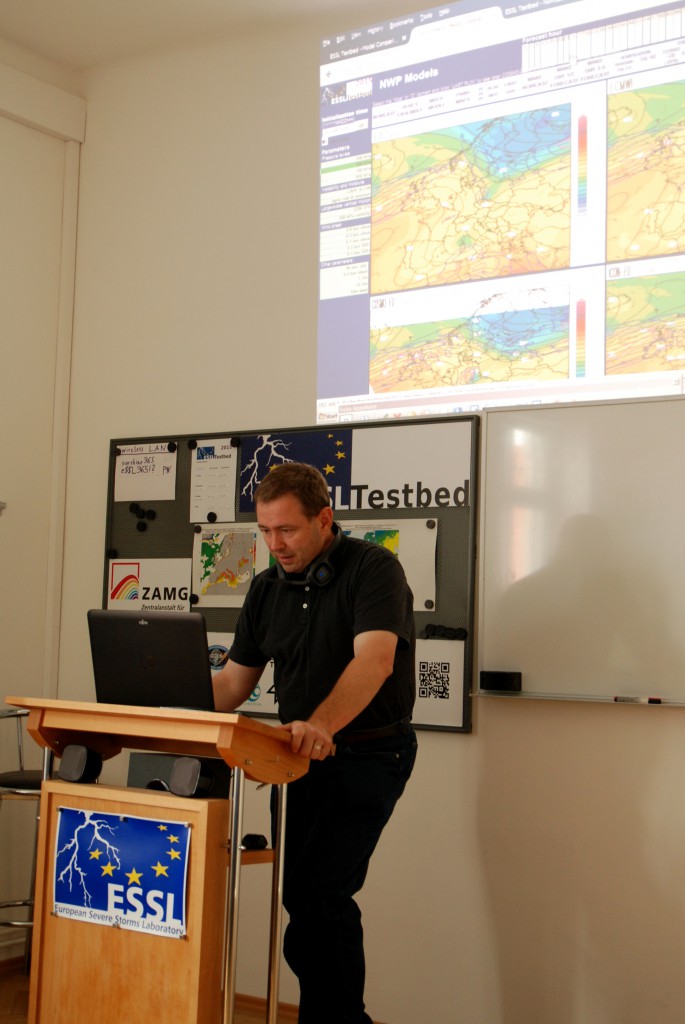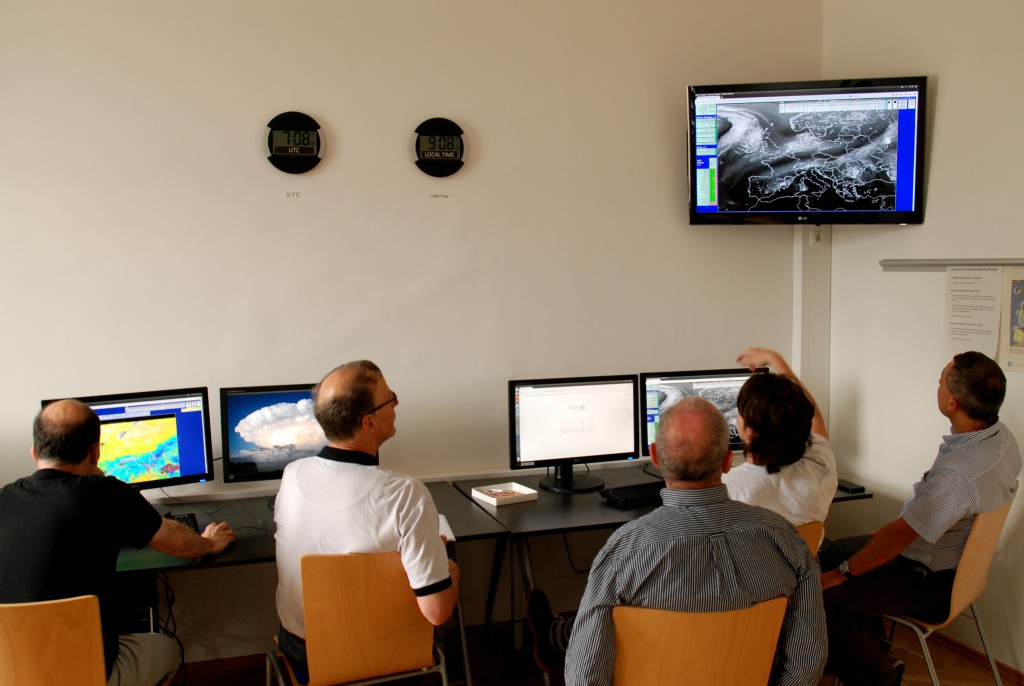It is the third day of forecasting and the area of interest has shifted from Central and Western Europe to Italy and the Balkan area. Therefore the participants concentrated their Day1 and Day2 outlook to the southern domain.
Concerning Day 1:Short wave features influence most parts of the southern domain which are one of the trigger mechanism for today. Quite high values of moisture could be find especially near the coastlines of Italy and Croatia as well as Greece, whereas lapse rates were best more inland. Looking on the streamlines and 10 m convergence several regions could be find where onshore flow and converging streamlines should enhance the threat for excessive precipitation. Local models have shown quite high amounts of rain. Having only low values of DLS not much organization is expected, so hail and wind should not be that pronounced. The overall threat moves from Italy during the day until Croatia and Greece during the evening and night. The strongest signals for excessive precipitation due to convergent onshore flow and a visible mid level low were encircled with a LVL2 area.
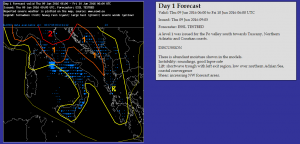
We had vivid discussions concerning the concrete placement of the high lightning probabability and LV1/LVL2. This reflects also the uncertainty that exists with the outlook.
For Day2 the area of interest is almost the same. Italy and Croatia as well as Greece are the areas of interest. Again features of the trough should be the source for lift on that day. For Adriatic west-coast conditions seem to be better (moisture, lapse rates and upslope wind) so a LVL1 was issued.
In todays online session Rich Thompson had a quite interesting presentation about storm modes.
Compared to yesterdays Day2 outlook this afternoon and evening seems to become much more interesting. After finishing the evaluation of lightning density and rotation tracks the teams will proceed with either Day3 to 5 outlook or Nowcasting of the area of interest.


Looking forward to an exciting afternoon session.











